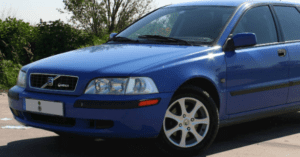Volvo S40 V40 Service Repair Manual

Volvo S40 repair manual
The Volvo S40 and V40 were a pair of compact executive cars that were produced by the Swedish automaker Volvo. The S40 is the sedan version, and the V40 is the wagon (estate) version. These models were produced from the mid-1990s to the early 2000s. Here are some key points about the Volvo S40 and V40:
- First Generation (1995–2004): The first generation of the S40 and V40 was introduced in 1995. These models shared platforms with the Mitsubishi Carisma. The design was a departure from Volvo’s traditional boxy look, featuring a more rounded and aerodynamic design.
- Body Styles: The S40 is the four-door sedan version, and the V40 is the five-door wagon/estate version. Both shared many components and had similar styling.
- Engines: The S40 and V40 were available with a range of engines, including four-cylinder gasoline and diesel options. Some models featured turbocharged engines, providing a balance of performance and fuel efficiency.
- Safety Features: As with other Volvo models, safety was a priority for the S40 and V40. They featured safety innovations such as side-impact airbags, side-impact protection, and whiplash protection systems.
- Interior Comfort: The interior of the S40 and V40 was designed with comfort and functionality in mind. Volvo’s attention to ergonomics and safety was reflected in the interior layout.
- Facelifts: The first-generation S40 and V40 underwent facelifts during their production run, receiving updates to styling and features.
- Second Generation (2004–2012): The second generation of the S40 and V50 was introduced in 2004. The V40 was succeeded by the V50, which was a larger and more modern wagon. The S40 continued as the sedan variant.
- Platform: The second-generation models were built on the Ford C1 platform, which was shared with Ford and Mazda. This platform-sharing was a result of Volvo being part of the Ford Motor Company at the time.
- Engines and Transmissions: The second-generation S40 and V50 continued to offer a range of engines, including both gasoline and diesel options. Transmission options included manual and automatic transmissions.
- Discontinuation: The S40 and V50 were eventually discontinued, and Volvo shifted its focus to newer models in line with evolving market demands.
The S40 and V40 are remembered for their combination of Volvo safety features, practicality, and a departure from the traditional boxy design that characterized many earlier Volvo models. If you’re interested in purchasing one of these models in the used car market, it’s advisable to consider factors like maintenance history and overall condition.

